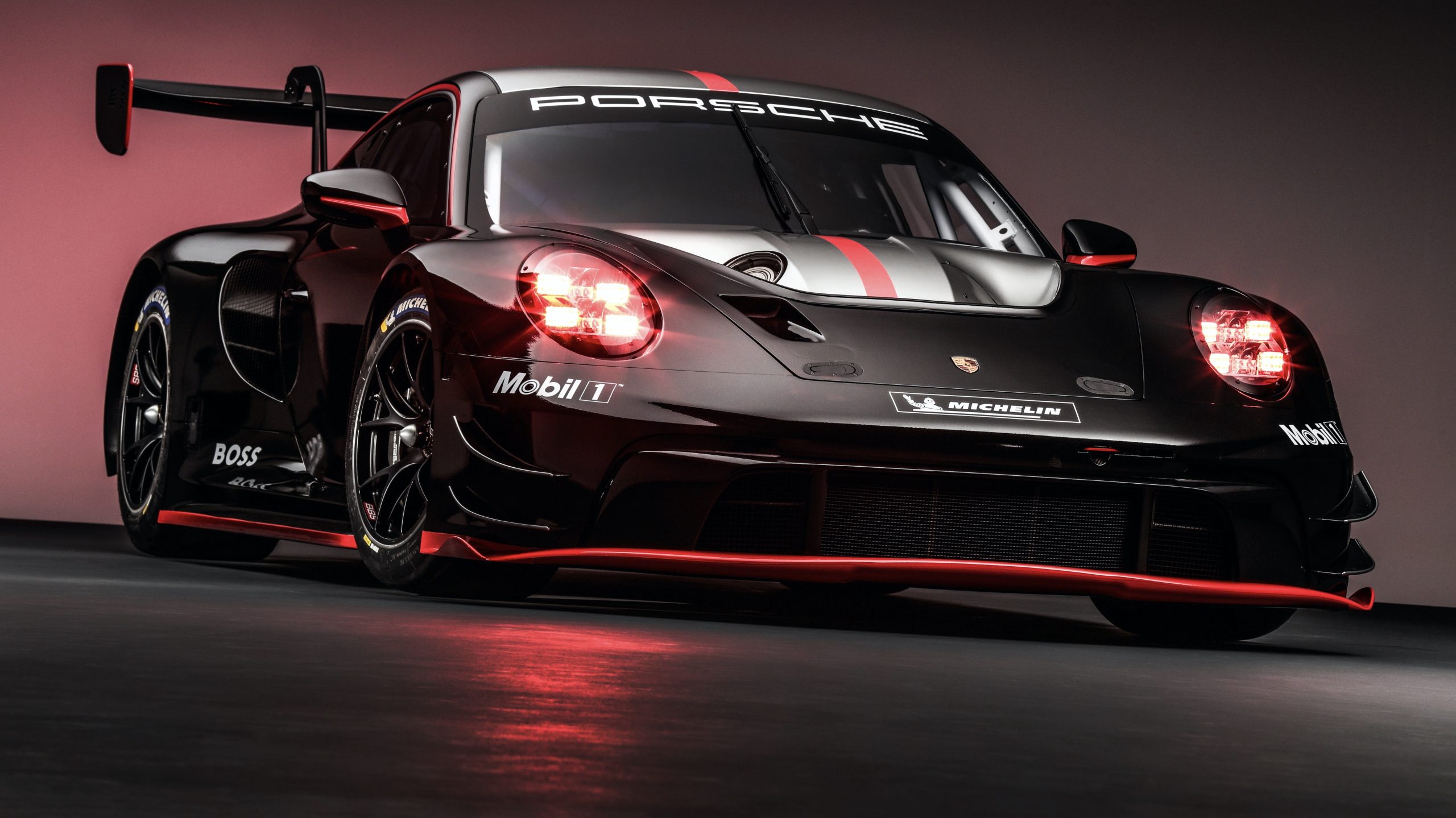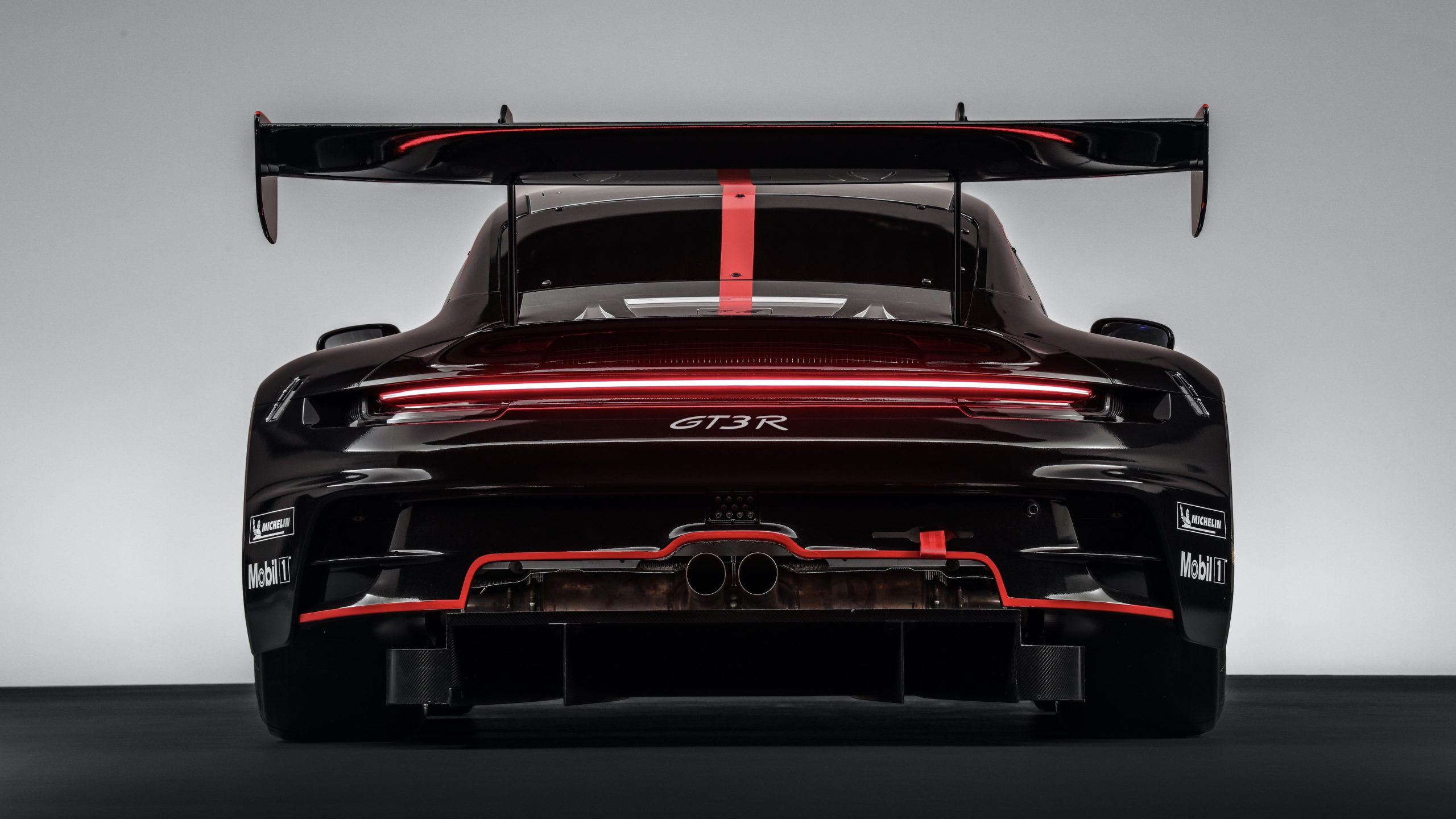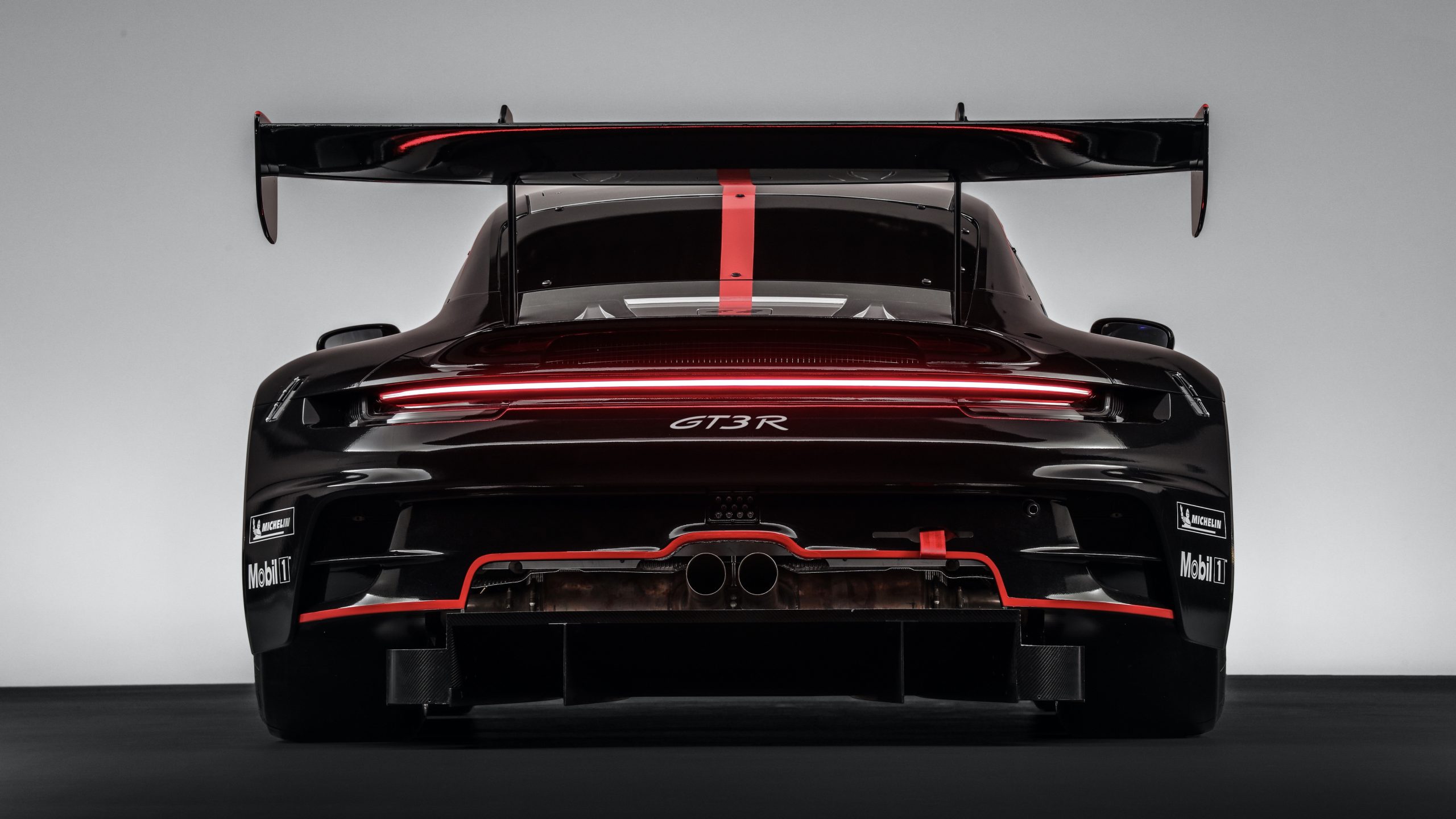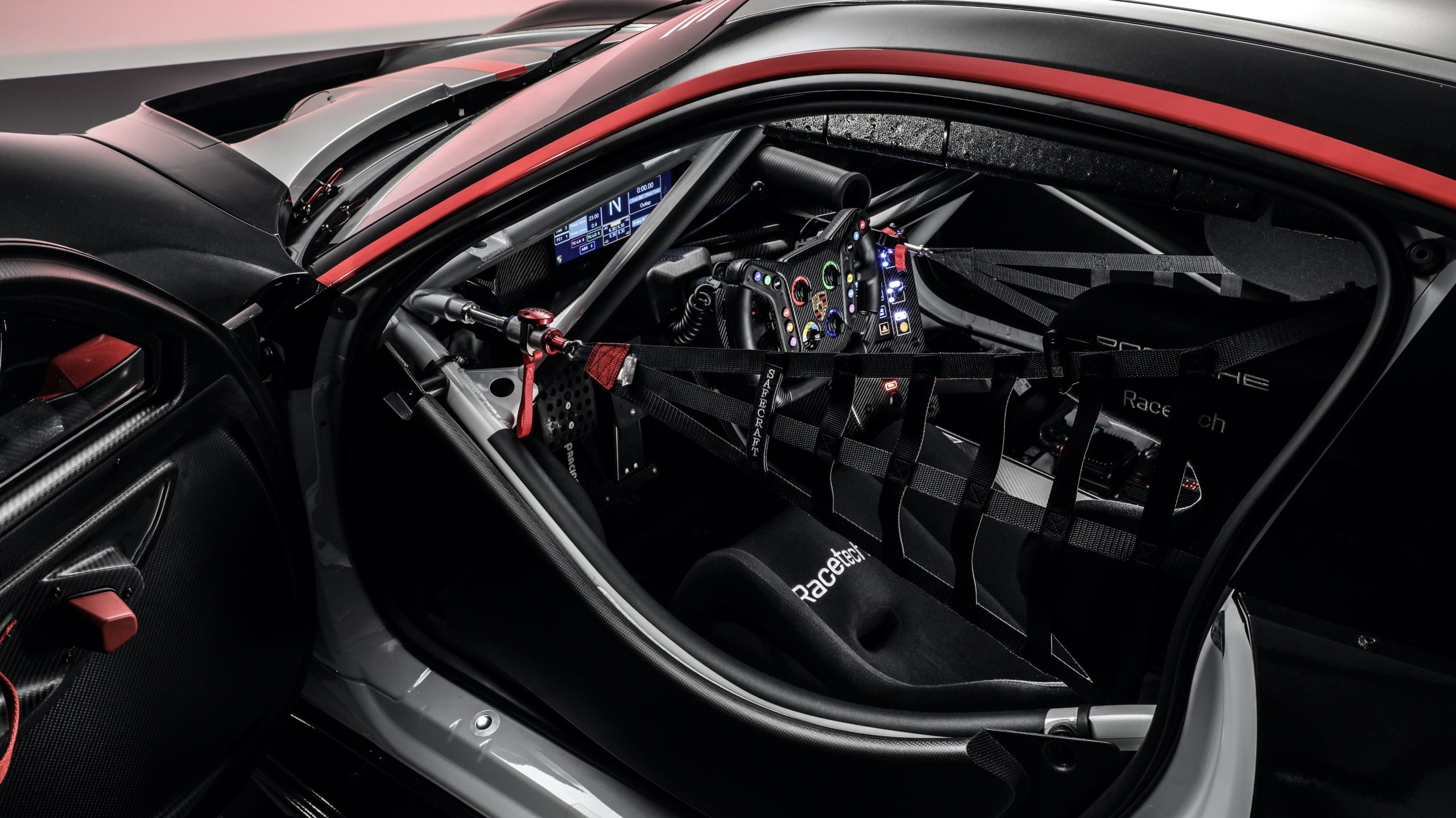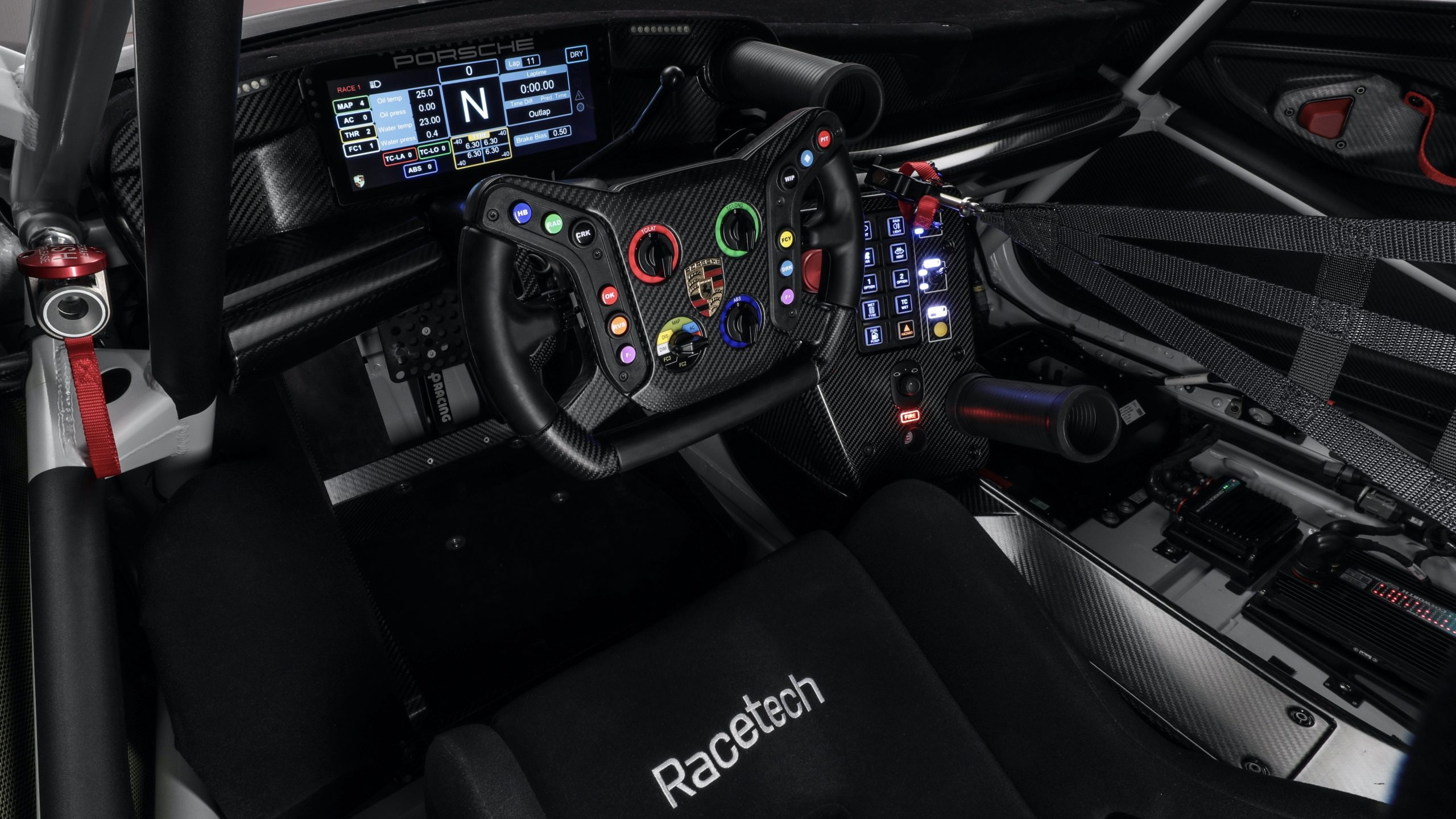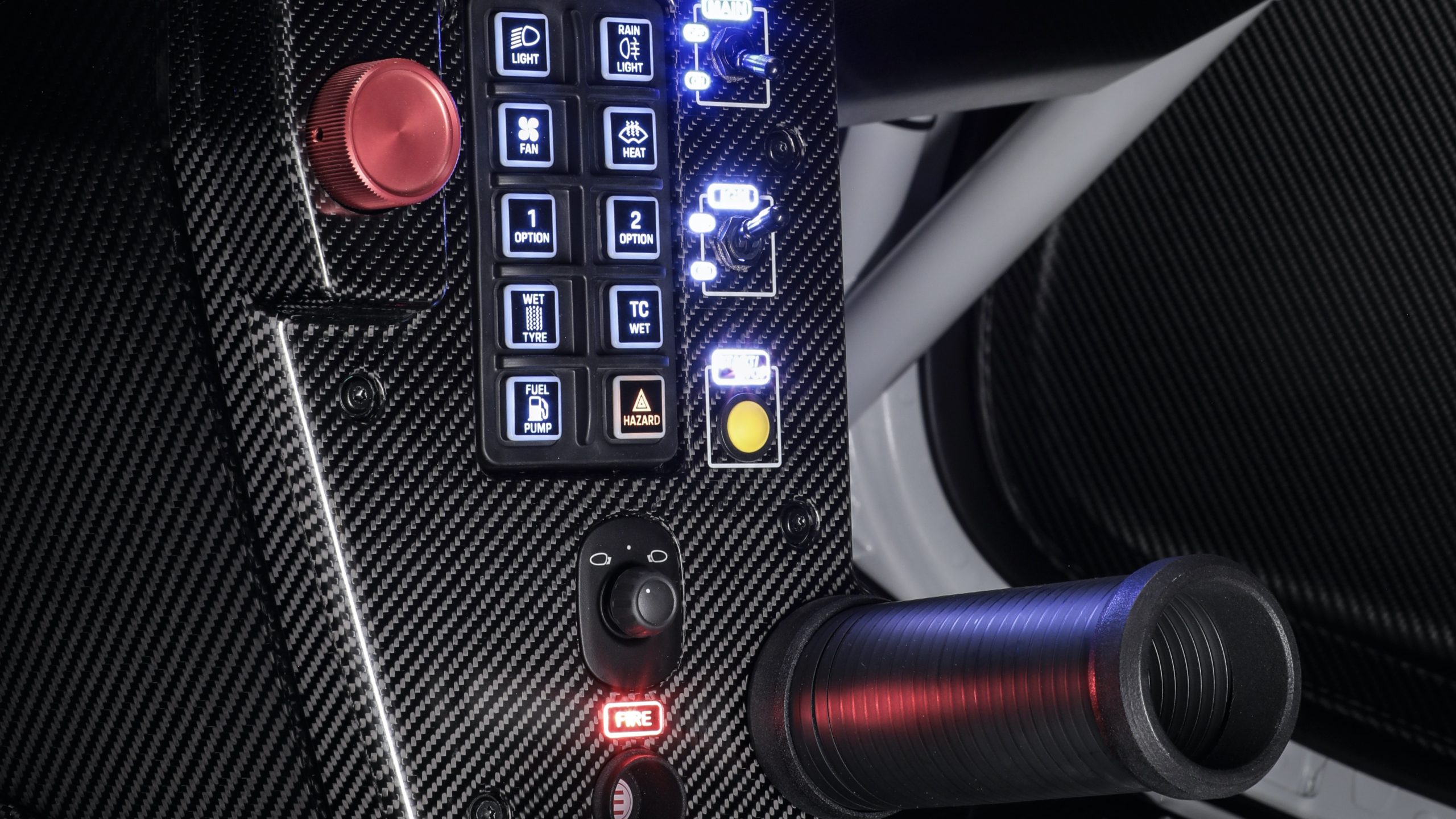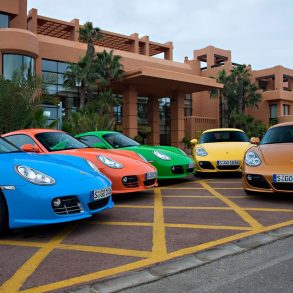Ultimate Guide to the Porsche 911 GT3 R (992.1)
The Porsche 911 GT3 R (992.1) is the sharp end of Porsche’s customer GT racing program: a factory-built GT3 weapon designed to win endurance races in the hands of private teams. Introduced for the 2023 season, it took the already-successful 991.2 GT3 R and evolved everything—engine, aero, suspension, safety and serviceability—to handle longer races, tougher Balance of Performance (BoP), and a wider range of driver skill levels.
This guide covers the story, specs, tech, racing record, model-year evolution, reception, and buyer considerations for the 992-generation GT3 R. Porsche unveiled the new GT3 R at the 2022 24 Hours of Spa-Francorchamps, with cars eligible for global GT3 competition starting in 2023.
Porsche Motorsport set three main goals when replacing the 991.2-based GT3 R:
- Make it easier to drive consistently fast over long stints, especially for gentleman/amateur drivers.
- Improve durability and serviceability for 24-hour races like Daytona, Spa and the Nürburgring.
- Build in performance headroom so BoP doesn’t leave the car strangled.
Compared to its predecessor, the 992 GT3 R features:
- A larger 4.2-litre naturally aspirated flat-six (up from 4.0 L).
- A longer wheelbase and wider track based on the 992 road car.
- Totally revised aerodynamics designed to produce more consistent downforce across a range of ride heights.
- Redesigned cockpit, safety cage, and seat to meet the latest FIA safety requirements and speed up driver changes.
From the outset, the 992 GT3 R was built as a global GT3 platform: it races in IMSA WeatherTech SportsCar Championship, FIA World Endurance Championship (LMGT3), GT World Challenge, NLS/Nürburgring Endurance Series, and various national GT3 series worldwide.
Porsche Motorsport sells it as a turn-key race car to customer teams. The launch price was €511,000 plus country-specific VAT and options, making it more than twice the cost of a GT3 Cup car.
Engine & Drivetrain
At the core of the 992.1 GT3 R is a reworked version of Porsche’s race-bred flat-six.
From Porsche and technical summaries:
- Type: Water-cooled, naturally aspirated flat-six
- Displacement: 4,194 cc (4.2 L)
- Power: up to 416 kW (565 hp), depending on BoP
- Rev range: spins comfortably past 9,000 rpm in unrestricted form (BoP will often cap RPM/power)
- Fuel: FIA GT3-spec racing fuel, with provisions for sustainable fuels depending on series
Key engineering changes vs the 991.2 GT3 R:
- Displacement increased from 4.0 L to 4.2 L to provide more torque and flexibility, making the car easier for Am drivers to handle, especially in traffic and on corner exit.
- The engine is tilted further forward and moved slightly ahead, improving weight distribution and rear tyre load.
Transmission
Power is sent through a race-spec gearbox:
- 6-speed sequential dog-type gearbox, operated via steering-wheel paddles.
- Rear-wheel drive only.
- Robust clutch and driveshafts designed for standing starts and long-duration racing.
The combination of high-revving NA engine and sequential box gives the GT3 R a very different character to the turbocharged road-going Turbo/Turbo S models—it’s much closer in feel to a GT3 Cup, but with more aero and grip.
Chassis, Suspension & Brakes
The 992 GT3 R’s chassis is where much of the development effort went.
From Racecar Engineering and Porsche’s race-car pages:
Suspension & Geometry
- Front: Double wishbone (double A-arm) suspension, similar in concept to the 992 GT3 road car, but with race-specific geometry and adjustability.
- Rear: Multi-link rear suspension with motorsport-grade links and spherical bearings.
- Fully adjustable ride height, camber, toe and anti-roll bars at both ends.
The longer wheelbase and wider track give the 992 GT3 R greater high-speed stability and a more forgiving balance, which is especially appreciated in mixed-driver lineups.
Brakes
- Front: large ventilated steel discs with six-piston aluminium calipers
- Rear: ventilated steel discs with four-piston calipers
- Series run on BoP-controlled brake packages, but Porsche engineered the system for endurance durability and consistent pedal feel over long stints.
Teams can tailor pad compounds, cooling and brake bias to the series and circuit.
Weight & Balance
Porsche lists the car’s weight as around 1,250 kg (about 2,755 lb), depending on BoP ballast. The repositioned engine, longer wheelbase, and aero package all contribute to a more neutral, predictable balance—Porsche repeatedly stresses that the car is designed to be “fast for longer” and less tiring to drive.
Aerodynamics
Aerodynamics are a big step over the old GT3 R. According to Porsche and Racecar Engineering:
- The 992 GT3 R benefits from a larger body surface and longer wheelbase of the 992 road car, creating more underbody and diffuser volume.
- A new front splitter, flat floor and rear diffuser generate a greater proportion of total downforce from the underbody, making aero balance more consistent across rake and ride-height changes.
- The large rear wing, fender louvers and venting are tuned for stable aero in traffic, reducing sensitivity when following other cars.
Porsche says the focus was not just higher peak downforce but more constant aero performance over stints, over kerbs, and through ride-height changes as fuel burns off.
Cockpit, Safety & Serviceability
Driver Environment
The cabin is pure race car but designed for ergonomics and fast driver changes:
- A fixed racing seat bolted to the chassis, with an adjustable pedal box and steering column so drivers of different sizes can be accommodated quickly.
- FIA-homologated roll cage and side-impact structures.
- Top-mounted safety net, multi-point harnesses and HANS compatibility.
- Central Bosch race display and steering wheel with integrated controls for ABS, TC, engine maps, radio and drink systems.
Serviceability
Porsche made a big push to reduce pit-lane time:
- Quick-release front and rear bodywork for rapid access to radiators, suspension and transmission.
- Simplified loom architecture and labelled connectors to cut down on fault tracing.
- Larger, more robust cooling package designed for high ambient temps and dirty race conditions.
For customer teams, that means less time chasing issues mid-race and more time focusing on strategy and driving.
Performance & On-Track Behaviour
Pure lap-time numbers vary wildly by BoP, circuit and series, but some broad performance markers:
- Up to 565 hp and about 1,250 kg gives a power-to-weight ratio in the 450–460 hp/tonne range in many series.
- Top speed is BoP- and gear-ratio-dependent but typically in the 280–290 km/h (174–180 mph) range on GT3 tracks.
TopGear’s track review notes that although the GT3 R has more drag than a GT3 Cup car, its extra power and downforce mean that in real GT3 trim, straight-line performance is almost identical, while cornering and braking performance are in a different league.
Drivers and engineers consistently highlight:
- High-speed stability and confidence on the brakes
- Progressive breakaway, with enough adjustability to tailor the car for either pro or Am drivers
- Very strong traction out of slow corners thanks to engine placement and suspension work
Racing Record & Reception
Customer Racing Success
By the 2024 season, the 992 GT3 R had firmly established itself as one of the benchmark GT3 cars.
Porsche’s own season summary notes that in 2024, customer teams:
- Entered about 350 GT3 races and championship rounds worldwide.
- Scored over 20 overall victories, around 60 class wins, and more than 150 podium finishes.
The 911 GT3 R is a “dependable force to be reckoned with” in tough GT3 competition across the globe.
Highlights include:
- IMSA WeatherTech SportsCar Championship (GTD Pro) – AO Racing’s #77 “Rexy” 911 GT3 R clinched the GTD Pro drivers’ and teams’ titles in 2024, helping Porsche secure the manufacturers’ crown.
- Multiple GT World Challenge Europe programs with teams like Dinamic GT, Herberth Motorsport, Pure Rxcing and others fielding 992 GT3 Rs.
- Strong showings in NLS/Nürburgring 24 Hours and other endurance classics.
Media & Driver Impressions
TopGear’s 2023 review of the GT3 R (driven back-to-back with a GT3 Cup) underlines several points:
- The 4.2-litre NA engine is ferocious yet tractable, with its extra displacement making it friendlier for non-pros.
- The aero and suspension make it substantially faster in corners and under braking than a Cup car, despite similar straight-line pace.
- It feels like a “proper GT3 weapon”, but not a widow-maker—an intentional trait given its customer focus.
Customer teams also praise the car’s durability and consistency; Porsche Motorsport proudly points out that the GT3 R was designed so customers can drive it “faster for a longer time” without the car falling away under BoP or tyre wear.
Model-Year Updates & the 2026 Evo
The 992.1 GT3 R essentially covers the 2023–2025 seasons in its original form. Starting in 2026, Porsche is rolling out an optimized evolution of the car.
Porsche announced in August 2025 that:
- The 4.2-litre engine and drivetrain remain largely unchanged, still delivering up to 416 kW (565 PS) under BoP.
- The 2026 car gets revised aerodynamics, including prominent louvres/ventiducts over the front wheel arches, improving front-end downforce and stability under braking.
- Suspension kinematics are updated to introduce an anti-dive effect at the front, helping maintain aero balance when the car pitches forward under heavy braking.
- Additional cooling improvements (driveshaft, steering fluid, etc.) are aimed at further boosting endurance reliability.
- Crucially for existing owners, Porsche will sell around 60 update kits so current 992 GT3 Rs can be upgraded to near-2026 spec without buying new cars.
Ownership, Costs & Use Case
Who Buys a 992 GT3 R?
The GT3 R is targeted squarely at professional and semi-pro teams, not private individuals looking for a track toy (that’s more GT3 RS / GT3 R Rennsport territory).
Typical buyers:
- GT3 teams running in IMSA GTD / GTD Pro, WEC LMGT3, GT World Challenge, Asian Le Mans, NLS and national GT3 championships.
- Ambitious gentleman drivers who want a factory-supported, globally eligible platform.
- Purchase & Running Costs
- Purchase price (new): €511,000 plus VAT and options at launch.
- Market listings for lightly used cars often fall in the €500k–€560k range, depending on spares and mileage.
- Running costs will vary hugely with program scale, but GT3 R budgets typically include:
- Regular engine and gearbox refreshes based on Porsche’s recommended hour limits.
- High consumption of tiores and brakes, especially in sprint series.
- Professional data engineering and setup work to extract pace under BoP.
- Porsche backs cars with extensive Motorsport customer support, parts supply and engineer presence at major events, which is a big part of the GT3 R’s appeal versus rivals.
- GT3 R vs. GT3 Cup vs. GT3 R Rennsport
- To place the 992.1 GT3 R in Porsche’s motorsport lineup:
- 911 GT3 Cup (992.1): Entry-level one-make car, closer to the road GT3, cheaper (~£225k), less aero and power, run in Supercup and Carrera Cups.
- 911 GT3 R (992.1): Full-blown multi-brand GT3 race car, more power (up to 565 hp), more drag but much more downforce, endurance-focused.
- 911 GT3 R Rennsport: Ultra-limited track toy derived from the GT3 R with wilder aero and more power, built in 77 units and aimed at collectors rather than series racing.
- For pure racing in GT3 series, the GT3 R is the correct choice—and the backbone of Porsche’s GT customer racing empire.
- Key Specs – Porsche 911 GT3 R (992.1)
- Compiled from Porsche Motorsport and technical reports:
- Model: Porsche 911 GT3 R (Type 992)
- Production start: 2023 racing season
- Homologation: FIA GT3
- Engine: 4.2-litre naturally aspirated flat-six
- Power: up to 416 kW (565 hp), depending on BoP
- Transmission: 6-speed sequential dog-type gearbox, paddle shift
- Drivetrain: Rear-wheel drive
- Weight: ~1,250 kg (BoP-dependent)
- Chassis: 992-based steel body shell with welded roll cage; double wishbone front / multi-link rear
- Aero: Front splitter, flat floor and diffuser, large rear wing, optimized for consistent downforce
- Brakes: Ventilated steel discs, 6-piston front / 4-piston rear
- Price when new: €511,000 plus VAT and options
- Final Thoughts
- The Porsche 911 GT3 R (992.1) is more than just a race version of the 911—it’s the distilled product of Porsche’s customer racing philosophy: a car that must be fast enough for professionals, yet forgiving and durable enough for amateurs to race flat-out for 24 hours.
- With its 4.2-litre flat-six, sophisticated aero, and proven race record, the 992 GT3 R has already cemented itself as a go-to GT3 contender. And with Porsche offering 2026 upgrade kits, it’s also a platform designed to evolve—ensuring that today’s 992.1 cars can keep fighting at the sharp end of GT3 grids for years to come.
Pictures & Gallery
Original Press Release
Debut for the newest generation of the Porsche 911 GT3 R
30/07/2022
The new Porsche 911 GT3 R will be unveiled to the public at this year’s 24 Hours of Spa-Francorchamps. From the 2023 season, Porsche customer teams can campaign the new racing vehicle in worldwide motorsport events that adhere to the GT3 regulations. The vehicle is based on the latest 992-generation 911. Compared to its predecessor, the new 911 GT3 R features a larger engine producing up to 416 kW (565 PS), a more constant aerodynamic performance and an optimised vehicle balance.
With the latest generation of the 911 GT3 R, Porsche unveils a new customer racing car. The new challenger for GT3 series around the world is based on the current 992 generation and will be ready to race at the beginning of the 2023 season. Development began in 2019. Priority was given to further improving the driveability for professionals and so-called gentleman drivers, as well as tapping larger performance reserves for different Balance of Performance (BoP) classifications. Another focus was on streamlining the handling of the race car for the teams and reducing the running costs.
“The new 911 GT3 R has big shoes to fill,” says Michael Dreiser, Sales Director at Porsche Motorsport. “Its forerunner has won almost everything there is to win in the GT3 scene in four seasons since 2019. Its stand-out successes include overall victories at the 24-hour races at the Nürburgring and also here at Spa-Francorchamps. Raced by our customers, the predecessor scored class victories at the 24 Hours of Daytona and the 12 Hours of Sebring. The new model faces a massive workload in the hands of the Porsche customer racing teams.” After the GT3 class was announced as a professional category in the North American IMSA series, the FIA WEC World Endurance Championship follows suit: From 2024, GT3 racing cars such as the new 911 GT3 R will be eligible to take part in the 24 Hours of Le Mans for the first time.
“We hit the bull’s eye with the enormously successful predecessor. Accordingly, the bar for its successor is high,” emphasises Sebastian Golz, 911 GT3 R Project Manager at Porsche Motorsport. “Our task was less about making the new 911 GT3 R even faster – the classification within performance windows set by the BoP quickly cancels out this advantage. For us, it was primarily about our customers being able to drive the racing car fast for longer. This requires durability and that’s why we focused predominantly on improved driveability. This is reflected in the new 4.2-litre engine’s broader usable rev band, more stable and constant aerodynamics and lower loads on the rear tyres, which allow their potential to last longer.”
Engine based on the 911 generation 992
At the core of the new racing car is the near-standard engine based on the 992-generation 911 power plant. Like in the previous model, it is a water-cooled flat-six engine with four-valve technology and direct fuel injection. The main new development is the displacement: like the 911 RSR, the capacity of the new 911 GT3 R has increased by a good five per cent from 3,997 to 4,194 cc. This has boosted the engine’s peak output to around 416 kW (565 PS). First and foremost, however, Porsche has optimised the torque and power curve across the entire rev range. Consequently, the new 4.2-litre six-cylinder is better suited to gentleman drivers.
The high-revving six-cylinder manages without turbocharging and sits in the classic rear position, thus enhancing traction and braking. However, it has been tilted forwards by 5.5 degrees, creating more leeway for the underbody diffuser. Auxiliary units such as the alternator and the air conditioning compressor were moved a good metre forward and further down into a space in front of the engine and gearbox, which has a positive effect on the weight balance of the 911 GT3 R. The sequential six-speed contest-mesh gearbox is derived from the current 911 GT3 Cup. Shift paddles control an electronic shift drum actuator that enables particularly rapid and precise gear changes.
Suspension modified in many details
The new 911 GT3 R’s suspension – many details of which have been modified – supports driveability, allows more precise steering, ensures less wear on the rear tyres and reduces the time spent on set-up changes. For this, numerous components and technical solutions were taken from the 911 RSR. At the front axle, a state-of-the-art double wishbone layout controls the wheels. The rear axle sports a multi-link design. The KW shock absorbers were further improved and offer five adjustment settings. Set-up modifications are done with so-called shims. These plates enable precision adjustments without the need for the time-consuming re-alignment of the suspension afterwards.
The optimised positioning of the central pivot points at the front axle frees up space for the aerodynamic “race underfloor” concept. Like in the 911 RSR, this elevated underbody allows for a clean flow of air to the rear diffuser and reduces the pitch sensitivity of the racing car – i.e. a high rake under braking. The rear wheels have moved a little further back, which extends the wheelbase from 2,459 to 2,507 millimetres. This also reduces the load on the rear tyres and improves the consistency of the tyres’ performance over longer stints.
Racing brake callipers by the specialist AP
In addition to the aluminium monobloc racing brake callipers, the brake discs on the new 911 GT3 R are now also supplied by the specialist company AP. The internally vented and slotted front steel discs measure 390 mm in diameter and are activated by six pistons. Fitted at the rear are four-piston callipers and discs measuring 370 mm. A sophisticated software application for the fifth-generation racing ABS reduces wear on the tyres and brakes. Porsche’s traction control system also received a further development.
The new 911 GT3 R is just the second racing car from Porsche Motorsport to be based on the current 992-generation 911 after the 911 GT3 Cup. Its lightweight body with an intelligent aluminium-steel composite design draws on the production model, albeit with major modifications for use in the 911 GT3 R. Almost all body components are made of lightweight carbon, including the front and rear lids, doors, side panels, rear wing and roof. The wheel arches are made of aramid fibres.
Lightweight body with an aluminium-steel composite design
In a vehicle like the new 911 GT3 R, functionality stands at the forefront. Nevertheless, Grant Larson from Style Porsche again succeeded in creating particularly stunning and harmonious shapes. They accentuate the heritage of the nine-eleven and blend it with sophisticated efficiency. Most notably, this is reflected in the aerodynamics. The key points: an elevated underbody at the fore of the front axle, for the first time in conjunction with a smooth undertray, and a rear diffuser. This combination improves downforce without a significant increase in drag. The rear wing now features a swan-neck mount. This ensures a clean airflow under the wing and thus improves the aerodynamic efficiency of the component.
In terms of safety, the new 911 GT3 R follows an uncompromising approach. The seat has moved closer to the centre of the car. This enabled Porsche to optimally adapt the more ergonomic seat position to the improved roll cage and the newly developed FIA side impact protection. Like in the forerunner, the steering wheel and pedals can be adjusted longitudinally to suit the driver. Porsche specialists took another close look at the six-point safety harness: the tongues now slide even faster into the clasp via special ramps – saving about a second during pit stops for driver changes. The steering wheel design also received further upgrades on the previous model. It incorporates elements that have proven themselves in the latest generation 911 GT3 Cup and 911 RSR race cars. The 10.3-inch display, for example, comes from the successful one-make cup racer, with the multi-switch concept adopted from the Le Mans class winner.
The high-performance LED headlights on the 911 GT3 R rely on so-called collimator technology, which Porsche developed for the new LMDh 963 prototype, among others. This device works like a magnifying glass, only in reverse. It illuminates a particularly large area of the racetrack and is a significant improvement on the predecessor model, which was previously regarded as the class leader.


